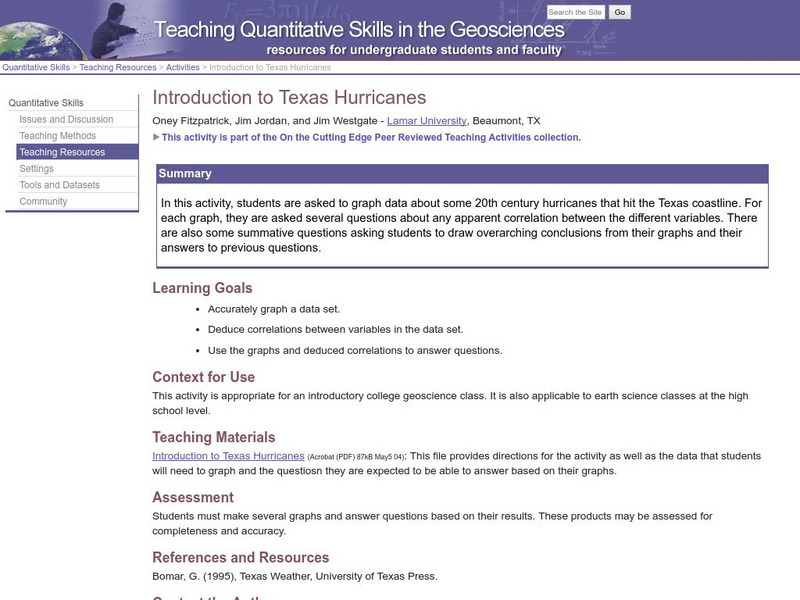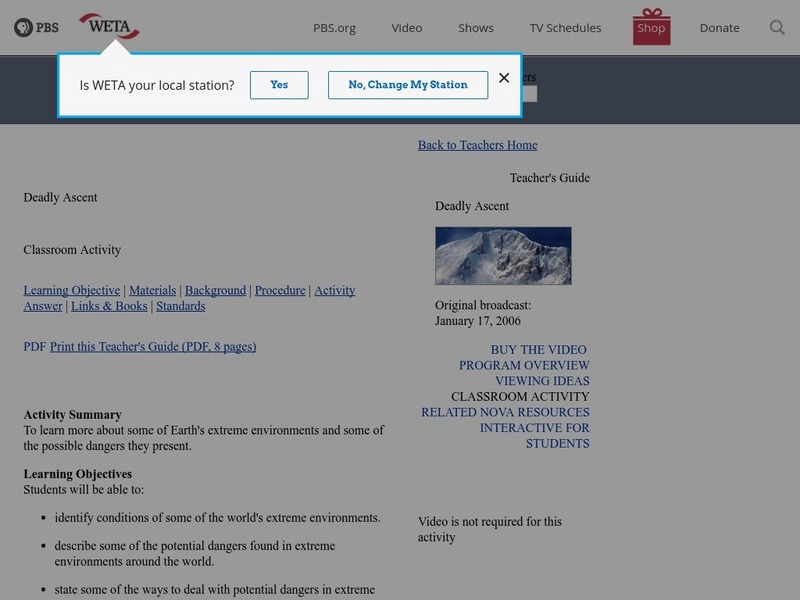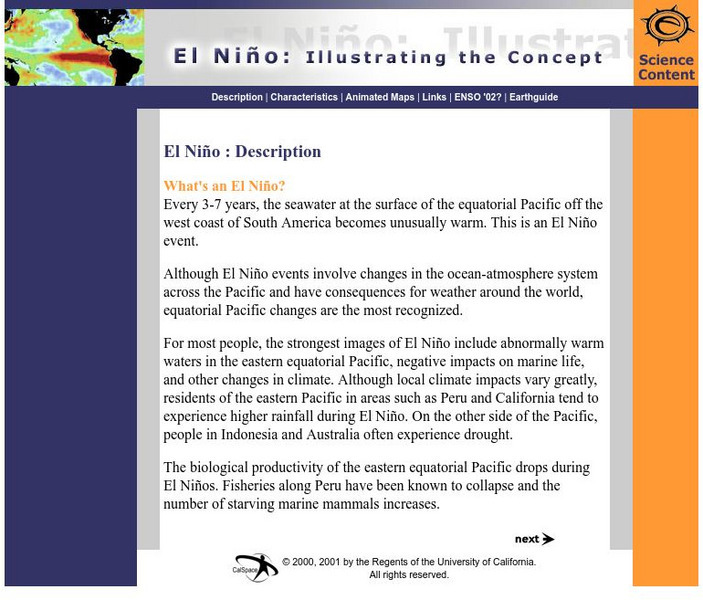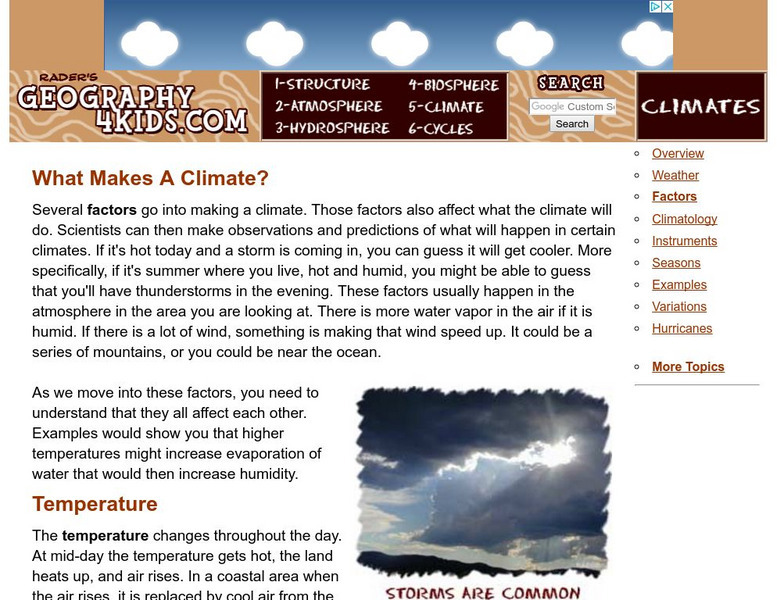Ducksters
Ducksters: Earth Science for Kids: Weather: Clouds
Kids learn about clouds including how they form, levels, fun facts, and types of clouds such as cirrus, cumulus, and stratus.
Bill Nye
Bill Nye: Barometer in a Bottle
This tutorial by Bill Nye explains how to make a simple barometer using a jar and a balloon. The barometer is an old and accurate first look at predicting the weather by examining the pressure of the atmosphere. Discover how atmospheric...
Science Buddies
Science Buddies: Measure the Pressure
Scientists have developed an instrument called a barometer that can measure atmospheric pressure. In this activity, you will find out how a barometer works by building one yourself.
TeachEngineering
Teach Engineering: Air Under Pressure
Students are introduced to air masses, with an emphasis on the differences between and characteristics of high - versus low-pressure air systems. Students also hear about weather forecasting instrumentation and how engineers work to...
Science Education Resource Center at Carleton College
Serc: Introduction to Texas Hurricanes
In this activity, students are asked to graph data about some 20th century hurricanes that hit the Texas coastline. For each graph, they are asked several questions about any apparent correlation between the different variables. Students...
Science Education Resource Center at Carleton College
Serc: Hands on Meteorology
A collection of interactive concept models and active learning materials for teaching meteorology that illustrate conceptually difficult processes in atmospheric science. Active learning exercises are provided as guided instruction to...
Center of Science and Industry
Cosi Columbus: Clues About Clouds
Science experiment that simulates how clouds are formed. Includes full list of materials, procedures, and scientific explanation of what must happen in the atmosphere for cloud formation to occur.
University Corporation for Atmospheric Research
Ucar: Climate
The climate where you live is called regional climate. Global climate is a description of the climate of a planet as a whole, with all the regional differences averaged. Includes links to additional resources on climate and climate change.
American Geosciences Institute
American Geosciences Institute: What Is the Water Cycle?
See Earth's water cycle as a closed system, where all the water is cycled through the atmosphere.
Other
Mcdwn: Climate
Wonderful site! Learn about climates and gather helpful information. When you are done, take the climates quiz to show what you have learned.
NASA
Nasa: Hurricanes
Learn about hurricanes and how they are created. Features include video animation, the histories of the most devastating hurricanes and topics such as hurricane naming and hurricane study.
NASA
Nasa: Global Wind Patterns
This site from NASA lists and defines global wind patterns. It features a graphic of these patterns and a self-test with answers.
PBS
Pbs Teachers: Deadly Ascent
Learn about some of Earth's extreme environments and possible dangers they present. Identify ways to deal with potential dangers in extreme environments.
CK-12 Foundation
Ck 12: Earth Science for Middle School
This digital textbook covers core earth science concepts and includes interactive features, real-world examples, videos, and study guides.
University of California
Earthguide: El Nino: Illustrating the Concept
Do you know what happens during a typical El Nino? This overview provides a description, characteristics, and animated maps showing sea surface temperature changes during past El Nino events.
Math Science Nucleus
I. Science Ma Te: Integrating Science, Math and Technology
This site offers a wealth of online textbook-related materials that encourage the discovery of science in the world around us. Enter the site to access material on specific topics. Each section contains reading material (complete with...
NASA
Nasa: Astronomy Picture of the Day: Jupiter From Voyager
Taken by Voyager 1 as it passed Jupiter in 1979, this image shows the Great Red Spot, which is a hurricane-like storm that has lasted over 300 years, and is more than three times the size of planet Earth.
Geography 4 kids
Geography4 kids.com: What Makes a Climate?
Find out what factors contribute towards a climate.
University Corporation for Atmospheric Research
Ucar: Clouds Memory Game
Test your memory while you learn about clouds. Click on tiles to reveal photos of clouds and try to find a matching pair.
Curated OER
Forecast Map
The National Weather Service presents this site on synoptic meteorology, large-scale weather systems. Learn about the structure and behavior of the atmosphere, including clouds, precipitation, winds and more. Also includes learning...
NOAA
Noaa: Photo Library: Solar Powered Surface Automated Measurement (Sam) Site
The National Oceanic and Atmospheric Administration provides a photo library of severe weather formations and the instruments that measure them. Here you can find a photograph of a solar-powered Surface Automated Measurement (SAM) site....
Other
Live Science: What Is a Jet Stream?
Jet streams are like rivers of wind high above in the atmosphere. These slim strips of strong winds have a huge influence on climate, as they can push air masses around and affect weather patterns.
CK-12 Foundation
Ck 12: Plix Series: Gas Mixture and Molecular Speeds
[Free Registration/Login Required] Hike to the top of Mt. Everest and observe what happens to the amount of molecules pushing down on the surface of the Earth. After the activity, answer one challenge question about the topic.
University Corporation for Atmospheric Research
Ucar: Make a Tornado
This site is provided for by the University Corporation for Atmospheric Research. Make a tornado or a twister in a jar. The step by step directions give a clear description of how to make these items.















